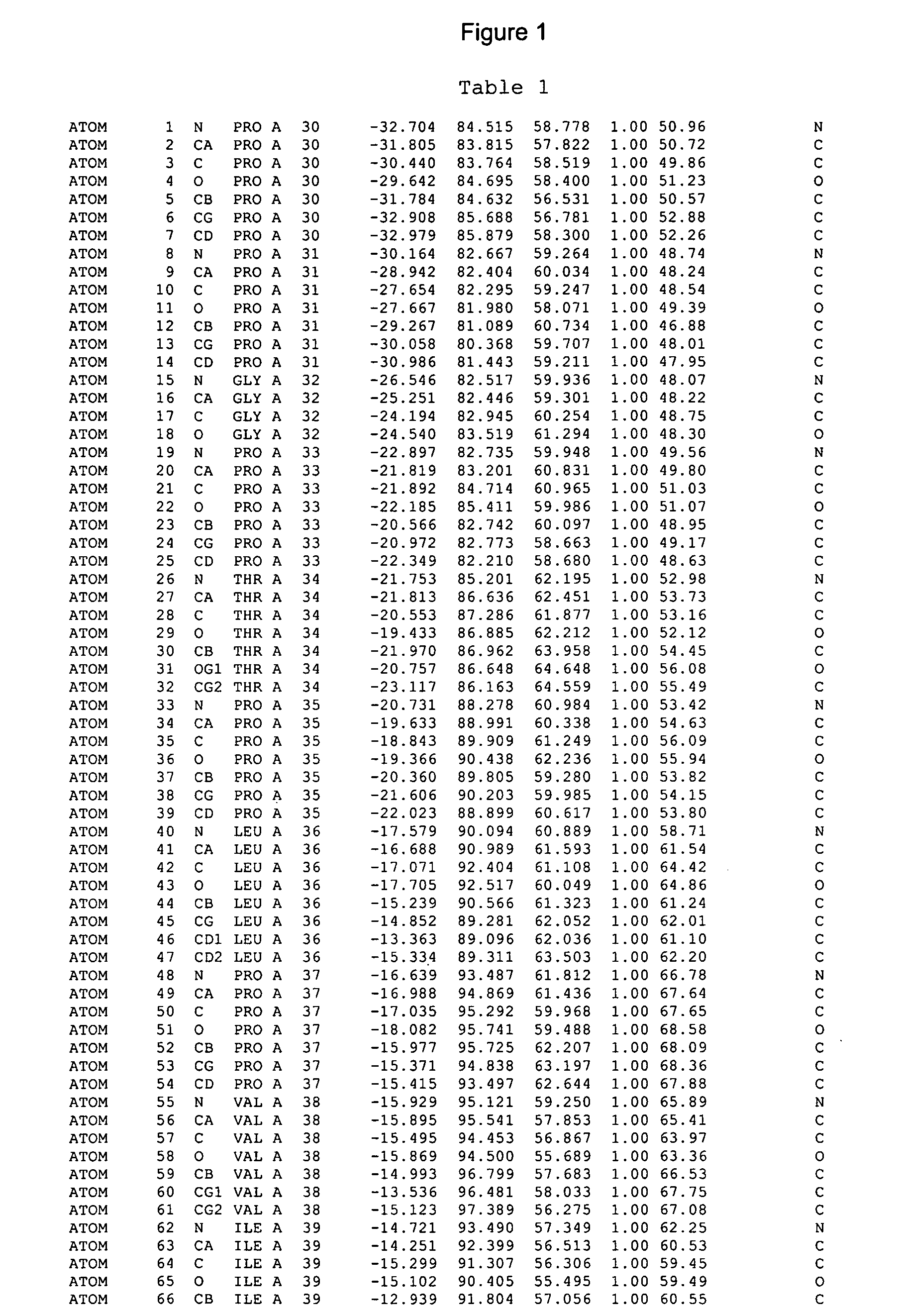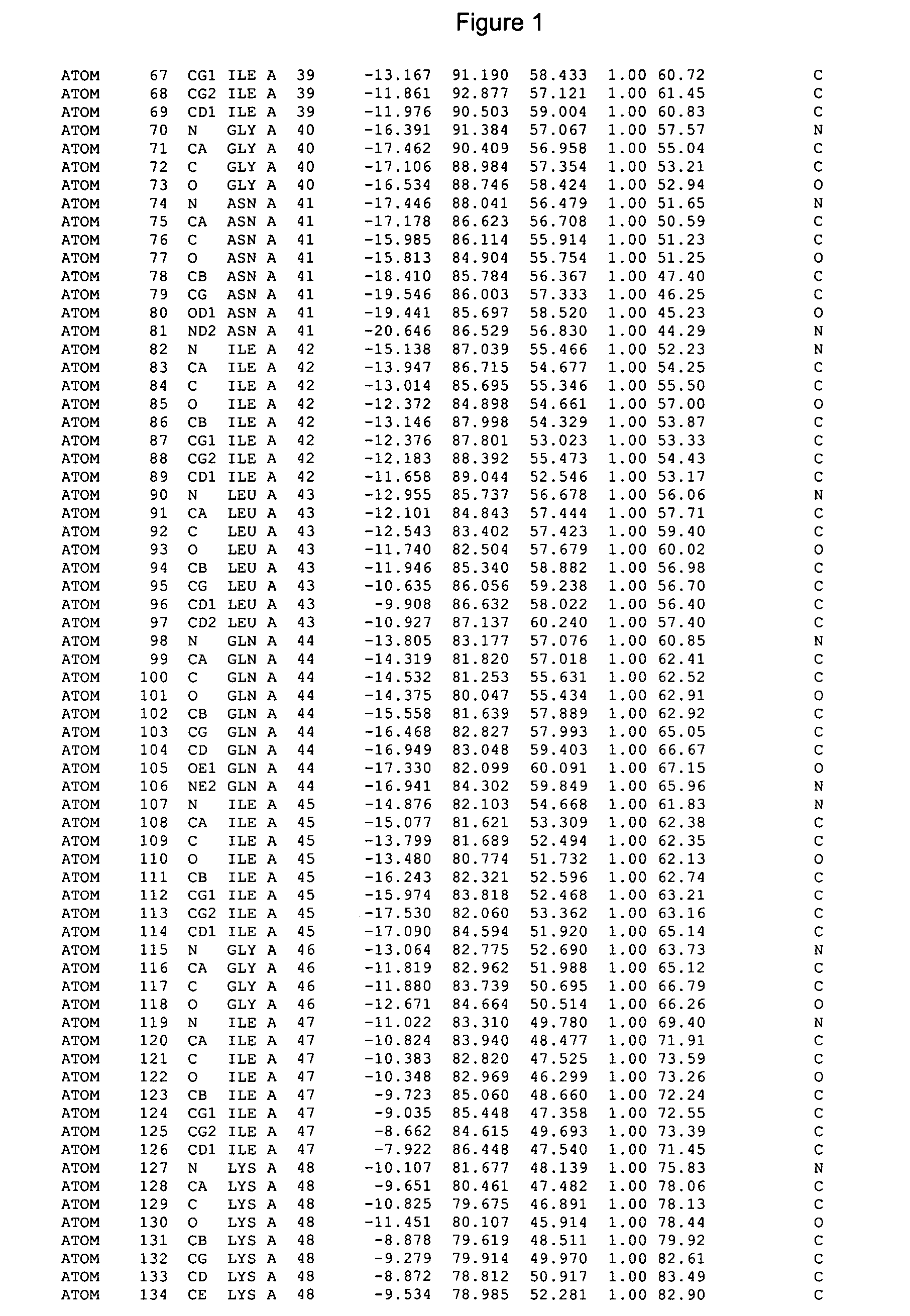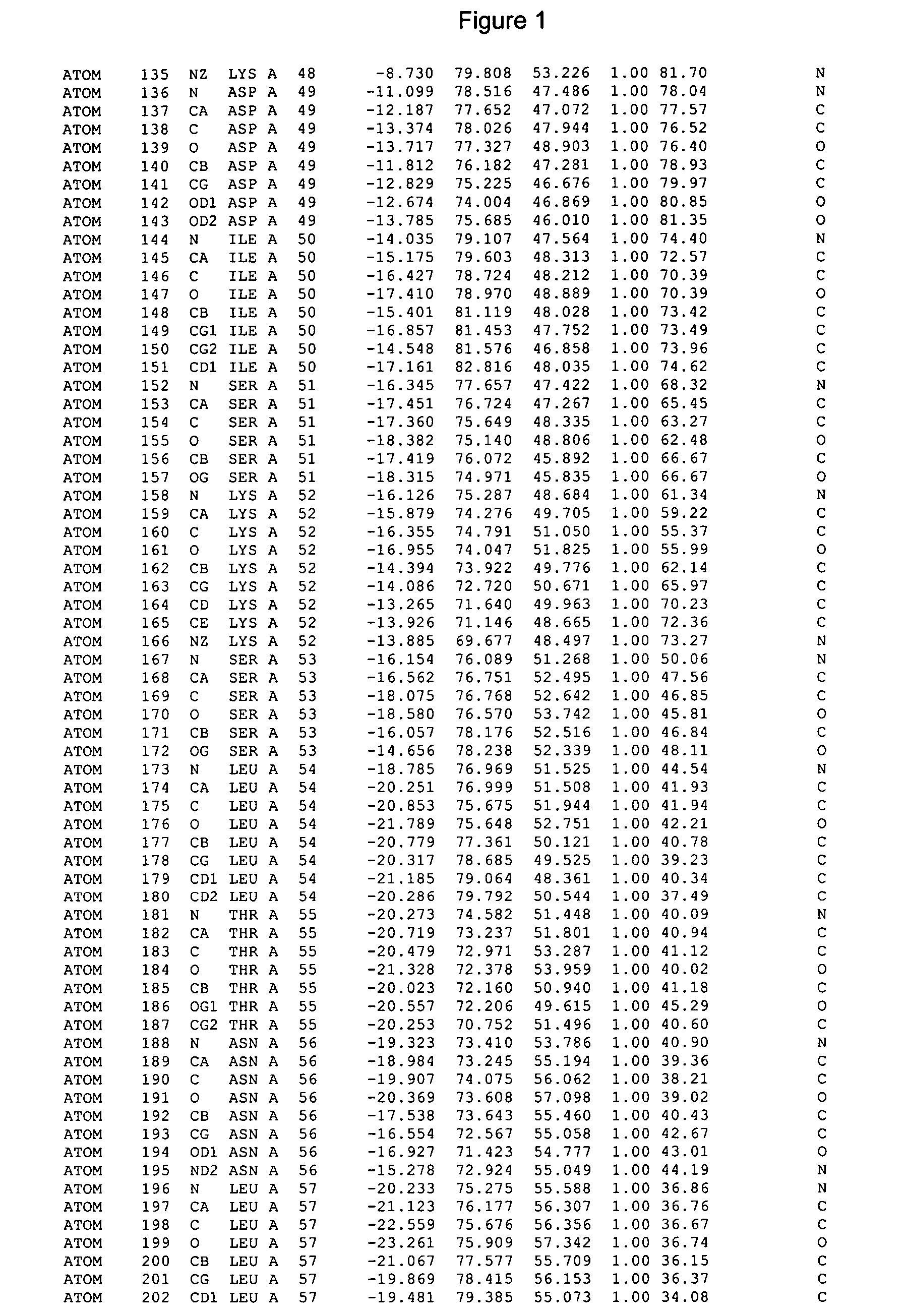Crystals of cytochrome P450 2C9, structures thereof and their use
a technology of cytochrome p450 and crystallization protein, applied in the field of crystallization protein 2c9, their structure and their use, can solve the problems of complex structure, chancy and difficult process without clear expectation of success, and the crystallisation of protein molecules from solution is the major obstacle, and the balance between specific and non-specific interactions is delica
- Summary
- Abstract
- Description
- Claims
- Application Information
AI Technical Summary
Benefits of technology
Problems solved by technology
Method used
Image
Examples
example 1
Co-Crystallisation of 2C9-FGloop K206E with S-Warfarin
[0368] CYP 2C9 catalyses the 6- and 7-hydroyxiation of the active enantiomer of warfarin, S-warfarin, to inactive metabolites. To explore the molecular basis of drug recognition we have determined the crystal structure of CYP 2C9 complexed with S-warfarin.
[0369] 2C9-FGloop K206E was produced in E. coli as described in Annex 1, the contents of which correspond to Example 1, 2, and 8 of WO03 / 035693. To establish the effect of the truncation and mutagenesis, a comparison of the activity and specificity of the protein was performed, and it was confirmed that the 6' and 7' hydroxylation of warfarin remained unchanged compared to wild-type 2C9.
[0370] Crystals were obtained by the hanging drop vapour diffusion method, using a 1:1 ratio of protein at 40 mg / ml in a solution of 10 mM potassium phosphate, pH 7.4, 0.5M potassium chloride, 20% (v / v) glycerol, 1 mM EDTA, 2 mM DTT against a crystallisation well solution of 0.1M Tris, pH 8.4, 15...
example 2
Relevance of the S-Warfarin Remote Binding Site for Drug Metabolism in Human Cytochrome P450 2C9
[0393] In this example the relevance of the remote warfarin biding site identified above is illustrated.
[0394] Cytochrome P450s 2C9trunc (1003, SEQ ID N04) and 2C9-FGloop K206E (1155, SEQ ID NO:2) metabolize the biologically active enantiomer of warfarin, S-warfarin one of the most widely prescribed oral anticoagulant, to the 6- and 7-hydroxyl metabolites to terminate the action of the drug. The structure of 2C9-FGloop K206E complexed with S-warfarin determined at 2.6 A resolution has revealed a new binding mode of warfarin distant from the heam, at the entry of the substrate channel, near the B'-C and F-G regions. To validate this remote binding pocket and to address its physiological relevance in drug metabolism in 2C9, residues L102, A103, L208 and N217, located in this remote binding pocket at .about.3.5 A from the S-warfarin molecule, have been mutated by site directed mutagenesis an...
example 3
Back-Soaking of 2C9FGloop K206E -Warfarin Crystals
[0413] Generation of the 2C9-S-Warfarin Complex Crystals.
[0414] Co-crystals of 2C9 construct 1155 with S-warfarin are generated in a similar way to the generation of apo crystals. To order to obtain suitably large, well formed crystals it remains necessary to set up a limited grid screen around a known crystallization condition. This is typically achieved by setting up crystallizations using the conditions 0.1 M Tris pH 8-8.8, 15-30% PEG 400, 5% PEG 8000, 10% Glycerol
[0415] It may prove necessary to vary some of the crystallization variables (e.g. buffer pH, precipitant concentration) further than in the screen described above. A crystallization tray is pipetted out, with each crystallization well containing 1 ml of the above solutions. A stock solution of 0.2M S-warfarin is generated by dissolving S-warfarin in 40% DMSO, 60% ethanol. 19 .mu.l of the first well solution is then removed, placed in an eppendorf and 1 .mu.l of the 0.2M ...
PUM
| Property | Measurement | Unit |
|---|---|---|
| concentration | aaaaa | aaaaa |
| pH | aaaaa | aaaaa |
| pH | aaaaa | aaaaa |
Abstract
Description
Claims
Application Information
 Login to View More
Login to View More - R&D
- Intellectual Property
- Life Sciences
- Materials
- Tech Scout
- Unparalleled Data Quality
- Higher Quality Content
- 60% Fewer Hallucinations
Browse by: Latest US Patents, China's latest patents, Technical Efficacy Thesaurus, Application Domain, Technology Topic, Popular Technical Reports.
© 2025 PatSnap. All rights reserved.Legal|Privacy policy|Modern Slavery Act Transparency Statement|Sitemap|About US| Contact US: help@patsnap.com



